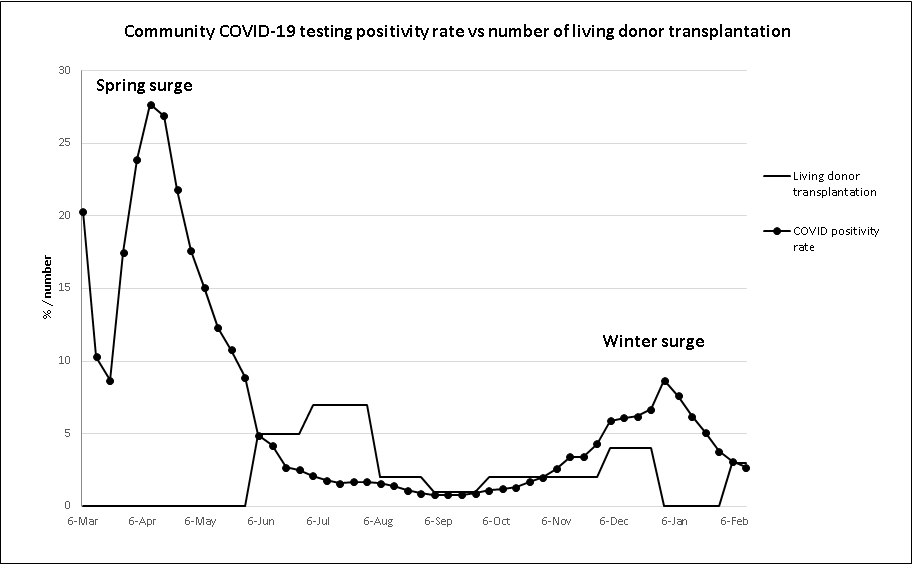Impact of a covid free pathway on the outcomes of Living donor transplants
SUMAN BHUSHAN KOGANTI, Yee Lee Cheah, Caroline J. Simon, Miguel E. Tobon, Edward Walshe, Frederic Gordon, Mohamed Akoad
HPB and Abdominal Transplantation, Lahey Hospital and Medical center, Burlington, Massachusetts, United States
Objective(s) To study the impact of the COVID free pathway implementation on the number of living donor liver and kidney transplants.
Design. Prospective observational study
Setting A single center study where all the living donor Kidney and Liver transplants were performed including both open as well as Robotic cases.
Patients A total of 54 patients (28 living donors and 26 living donor recipients) entered the COVID-free pathway from April 2020 until February 2021.
Interventions The pathway consisted of a three-tier testing, quarantine, and screening strategy. Most outpatient appointments were changed to televisits. Inpatients were roomed in units that do not have COVID patients. Rationale for the pathway was based on available data on the transmissibility dynamics of SARS-CoV-2 virus.
Main Outcome Measure(s) Performance of the testing strategy and its relationship to community 7-day COVID testing positivity rate and COVID-related outcomes.
Results Unsuspected asymptomatic COVID infection was detected in a living donor and kidney recipient pair (spouses) using our testing protocol which led to a postponement of their procedures. The rest of the living donor and recipient procedures proceeded as scheduled. None of the donors or recipients became infected with COVID during their hospitalization. One of the living donor liver recipients contracted COVID after discharge. The postponed pair who tested positive tested negative 2 months later with appropriate seroconversion and underwent uneventful donor nephrectomy and kidney transplantation. The rate of living donor transplantation was inversely related to the local COVID-19 positivity rate (fig2).
Conclusions
Our COVID-free pathway was useful in avoiding surgery in unsuspected infected living donors and their recipients. The comprehensive pathway allowed us to resume living donor transplant activity during the pandemic, though does not completely protect our patients after discharge.

Back to 2021 Posters
